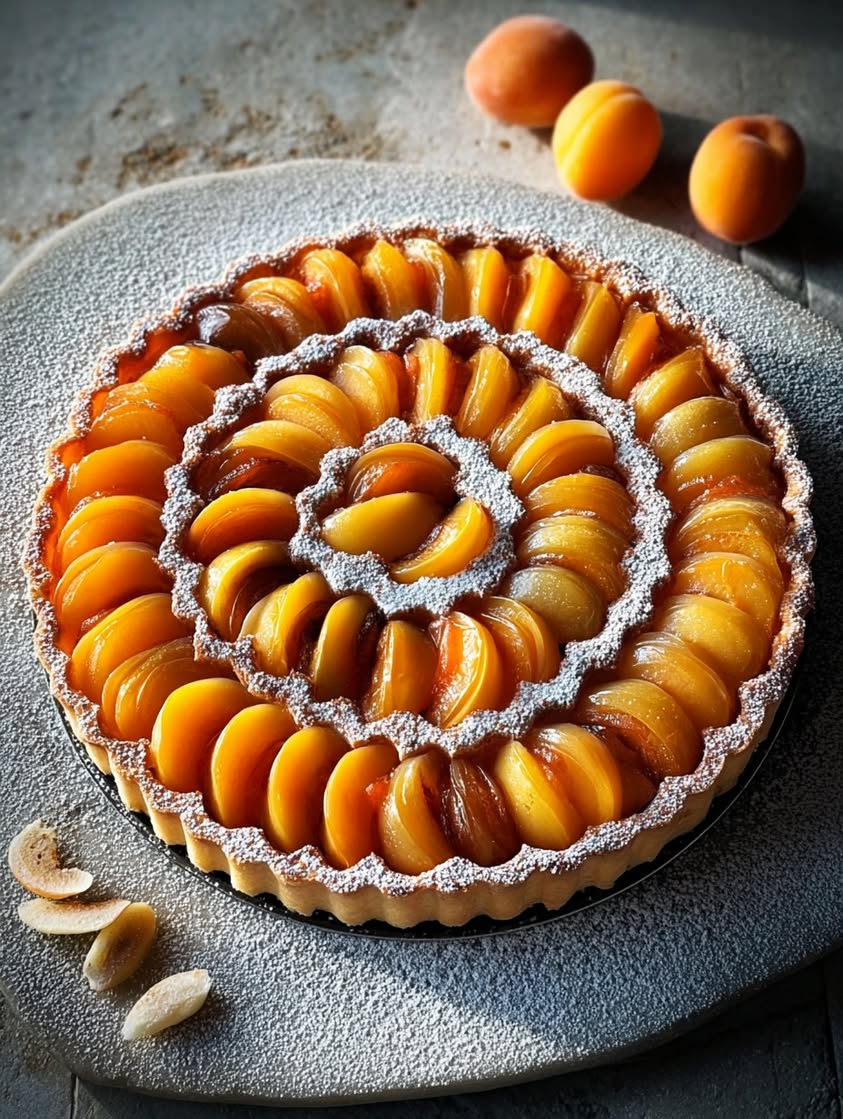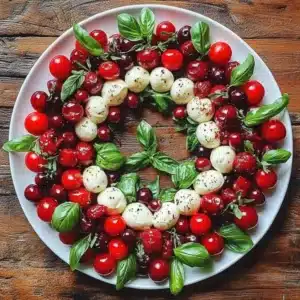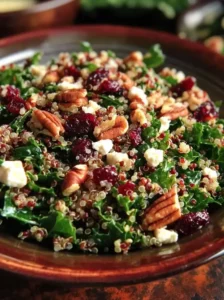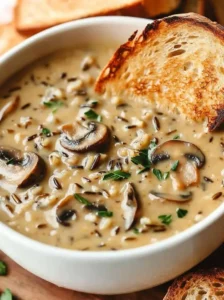Oranese Tart: A Mediterranean Delight
Indulge in the rich and savory flavors of an Oranese Tart, a dish steeped in Mediterranean heritage. Embedded with a delightful mix of spices and fresh vegetables this tart offers a wholesome bite with every mouthful. It combines a flaky pastry base with an aromatic filling that explodes with bold flavors, perfect for a satisfying brunch or a light dinner. The Oranese Tart stands as a testament to its region’s culinary excellence, offering comforting tastes reminiscent of coastal dining.
This Mediterranean Oranese Tart marries convenience with culinary artistry, presenting a recipe that is as attractive to busy households as it is to gourmet enthusiasts. The preparation of the Oranese Tart emphasizes using fresh, healthy ingredients, which are key in achieving the perfect balance of taste and nutrition. It is a delightful adventure for the senses, leaving you anticipating each bite, which melts effortlessly into an exquisite experience of crust and fill.
Quick Recipe Highlights
- Flavor Profile: The Oranese Tart is renowned for its aromatic blend of herbs and spices, creating a robust and savory taste with subtle sweet undertones.
- Texture: Expect a contrast between the crispy, flaky crust and the creamy, luscious filling, making every bite delightful and engaging.
- Aroma: The tart boasts an inviting aroma filled with nuanced herbal notes, heightened by the fragrances of fresh garlic and a dash of olive oil.
- Visual Appeal: With its golden crust and vibrant fillings, the Oranese Tart catches the eye with a picturesque presentation that’s equally appetizing.
- Skill Level Needed: This recipe requires intermediate cooking skills, particularly in creating a perfect pastry crust and evenly cooked filling.
- Special Equipment: A tart pan and a food processor are essential for achieving the signature crust and a smoothly blended filling.
Recipe Overview
- Difficulty Level: The Oranese Tart sits at a medium difficulty level. It requires patience and careful attention to detail, especially when making the crust and ensuring an even bake to avoid sogginess.
- Category: Perfect as an elegant brunch centerpiece or a distinctive appetizer, this tart fits into savory pie and Mediterranean cuisine categories.
- Cuisine: Originating from the coastal regions of the Mediterranean, the Oranese Tart is inspired by traditional flavors that add a vibrant touch to any meal.
- Cost: While it calls for some specialty ingredients, the tart is relatively affordable due to the use of commonly available vegetables and pantry staples.
- Season: Best enjoyed in Spring and Summer when fresh herbs and vegetables are in abundance, enhancing its fresh and vibrant appeal.
- Occasion: The Oranese Tart makes a delightful choice for casual lunch gatherings, picnics, or celebratory brunches, bringing flair to any table.
Why You’ll Love This Recipe
Experience the impeccable harmony of flavors and varied textures that make the Oranese Tart a favorite. Each bite captures the essence of Mediterranean culinary traditions, combining a flaky pastry with a rich and satisfying filling. The use of local herbs and spices ensures that this dish stands out as both delicious and fragrant, with a balanced flavor profile that won’t overwhelm.
Convenience is key with this tart. Prepping the ingredients is a straightforward task that doesn’t detract from its gourmet qualities. With a little planning, you can assemble the Oranese Tart ahead of time, bake it fresh when needed, and avoid a last-minute kitchen rush. Ideal for busy food enthusiasts who appreciate convenience without sacrificing taste.
From a nutritional standpoint, the tart’s filling provides a healthy dose of vitamins and minerals, contributing to a balanced diet. Made with fresh vegetables and spices, the Oranese Tart aligns with wholesome eating habits, proving that healthy doesn’t have to mean bland.
Socially, the Oranese Tart is a great conversation starter and centerpiece for gatherings. Its inviting aroma and eye-catching presentation make it perfect for sharing among friends and family, offering a memorable touch to any communal meal.
In terms of cost, the Oranese tart’s ingredients are relatively budget-friendly, furthering its appeal. The recipe uses ubiquitous kitchen staples along with a few specialized components, ensuring an affordable yet exquisite dish. Such aspects make it an accessible choice, even for novice cooks looking to delve into Mediterranean gastronomy.
Historical Background and Cultural Significance
Origins of the Oranese Tart trace back to the vibrant culinary traditions of the Mediterranean’s coastal regions, where sunlit terraces make a picturesque backdrop for leisurely lunches. This savory tart celebrates the essence of fresh, local produce and the historical abundance found in coastal kitchens. Featuring ingredients like olives and garden herbs, the dish harkens back to the region’s agrarian past, emphasizing simplicity and quality.
Culturally, the Oranese Tart symbolizes the fusion of flavors originally introduced through trade and cultural exchanges in the area. The marriage of ingredients such as aromatic spices and silky olive oil reflects Mediterranean cuisine’s penchant for robust taste profiles and intense aromas, a hallmark of its rich culinary heritage.
Over time, the recipe for the Oranese Tart has evolved, adapting to modern kitchen practices and incorporating locally available ingredients worldwide. This adaptability has allowed it to maintain cultural relevance, while still offering a flavorful homage to its roots. As a result, contemporary iterations often feature a range of diverse fillings, catering to evolving palates while honoring the traditional preparation that defines this beloved dish.
Despite regional variations, the constant remains: the Oranese Tart’s core elements of simplicity and elegance. Each version reflects local flavors, showcasing ingredients that contribute to its unique taste and character. Whether served warm or cold, the versatility in serving methods speaks to the dish’s enduring appeal and its success in melding historical flavor with modern tastes.
Ingredient Deep Dive
The crust of the Oranese Tart stands as the foundation of this culinary masterpiece. Traditionally, it involves a simple dough that, once baked, turns magnificently flaky and golden. Mediterranean cuisine prides itself on making efficient use of basic pantry ingredients, and this tart’s base exemplifies that simplicity brilliantly, marrying flour with butter for rich flavor.
Nutritionally, the crust offers a modest caloric investment, with carbohydrates providing a measure of energy, balanced by fats for satiety. Selecting high-quality flour ensures the dough rolls smoothly, resulting in a crisp, pastry-like texture upon baking. Keeping it stored in cool conditions before rolling ensures malleability, aiding in ease of handling.
The filling comprises vibrant vegetables such as ripe tomatoes, flavorful onions, and a selection of aromatic herbs. Each component contributes to an intricate medley of savory flavors typical of Mediterranean cuisine. Choose firm, ripe tomatoes for the best outcome, ensuring the juices impart a sweet and tangy balance without overwhelming the tart’s base.
Proper storage and selection of these vegetables ensure maximum freshness and flavor retention. Consider seeking out organic or farmers’ market produce for the most authentic and fragrant results. The versatility in filling adaptations means you can incorporate seasonal vegetables into the Oranese Tart, making it a flexible recipe for every time of year.
Common Mistakes to Avoid
- Not chilling the dough properly before rolling can lead to a sticky and hard-to-manage crust.
- Over-filling the tart can cause the crust to become soggy. Use just enough filling to cover the base.
- Allowing the filling to be too watery will prevent a cohesive texture. Sauté vegetables beforehand to release excess moisture.
- Failing to blind-bake the crust may result in an undercooked bottom layer.
- Skipping the cooling step after baking can cause the tart to lose its shape when removed from the pan.
- Using old or stale spices dulls the vibrant flavor profile of the tart. Be sure to use fresh and aromatic spices.
- Not preheating the oven accurately can affect the tart’s cooking time and final texture.
- Failing to adjust baking time depending on ingredient amounts may cause under or overcooking.
Essential Techniques
To achieve a perfect Oranese Tart, mastering the blind-baking technique is critical. This process involves pre-baking the pastry crust to ensure optimal crispness before adding the filling. It prevents the tart from becoming soggy while maintaining its structural integrity. Proper technique includes weighing the crust with pie weights or dried beans to prevent bubbling and ensuring an even bake.
Filling preparation also plays a significant role. Sautéing vegetables until tender and moisture-reduced is crucial for a flavorful tart filling. This technique concentrates flavors, removing excess liquid that can compromise the tart’s texture. Observing a slight browning of the vegetables signals the perfect stage to introduce them into the filling mix—aiming for a harmonious blend that complements the pastry’s flaky layers.
Pro Tips for Perfect Oranese Tart
Use high-quality butter for the crust to enrich its flavor and achieve a perfectly flaky texture. Opt for unsalted butter to control the tart’s overall saltiness.
Chill the dough before rolling it out to prevent sticking and make it easier to handle. This promotes a crisp and airy crust once baked.
Pre-bake the crust with weights to prevent any bubbling. This ensures a flat and uniform layer for your filling.
Balance the tart’s flavors by sautéing onions until they’re caramelized. Their natural sweetness adds depth to the savory elements.
Incorporate seasonal herbs such as basil or oregano that highlight the Mediterranean taste, elevating the tart to a new level of aromatic pleasure.
For a touch of subtle zest, consider adding lemon rind to the filling. It brings brightness and layers the complexity of flavors further.
Variations and Adaptations
Regional adaptations of the Oranese Tart offer a delightful twist on the classic recipe. In southern regions, the addition of sun-dried tomatoes amplifies flavor intensity, while northern versions might include mushrooms for added umami.
Seasonal adaptations allow for the substitution of vegetables within the filling. Springtime green peas or asparagus sections introduce vibrancy, tailored to shifting seasons.
For a dietary spin, a gluten-free crust can be crafted using almond or chickpea flour, accommodating coeliac or gluten-sensitive diets without forgoing texture.
Experiment with spice profiles for an enriched depth of flavor. Incorporate paprika or cumin seeds to introduce subtle heat, creating a unique version.
For a richer mouthfeel, a variety of cheeses such as feta or mozzarella can adorn the top. This adaptation brings creaminess, resulting in a luxurious taste experience.
Presentation alternatives include individual tartlets, which offer a bite-size version featuring the same delightful contrasts. These mini tarts make for perfect party appetizers, easy to handle and serve.
Serving and Presentation Guide
Plating the Oranese Tart beautifully enhances its visual appeal. Use a sharp knife to cut clean slices, preserving the golden crust and filling integrity.
Garnish each slice with a sprig of fresh basil, reflecting the dish’s garden-fresh origins. This simple touch adds vivid color and an herbal aroma.
Traditional accompaniments could include a crisp green salad or a light vinaigrette, balancing the tart’s richness with refreshing acidity.
Modern serving suggestions often pair the tart with an assortment of olives and artichokes, harmonizing perfectly with the recipe’s Mediterranean roots.
Ensure the tart is served either at room temperature or slightly warm to emphasize its textures and flavors thoughtfully.
Being mindful of portion control helps in maintaining the lightweight nature of the meal, leaving plenty of room for dessert or additional sides.
Wine and Beverage Pairing
A light white wine such as a Sauvignon Blanc or Pinot Grigio pairs exquisitely with the Oranese Tart. Their crisp, citrusy notes elevate the tart’s freshness.
For a non-alcoholic alternative, consider a sparkling water infused with lemon or lime. This refreshment echoes the tart’s light, herbal essence.
A robust herbal tea, like peppermint or chamomile, aligns with the medley of spices, offering a soothing pairing that complements the tart flavors.
Temperature-wise, chilled or lightly cooled beverages are ideal, aligning with the tart’s refreshing and bright profile.
Serve wine in clear, thin-stemmed glasses to enhance its visual appeal, ensuring it complements the tart’s elegant presentation perfectly.
Storage and Shelf Life
To store the Oranese Tart, cover it tightly with plastic wrap or place in an airtight container. Refrigeration is ideal and keeps the tart fresh for up to three days.
Ensure the tart cools completely before wrapping, to prevent condensation build-up which may affect the crust’s texture.
When reheating, use a low oven temperature to warm the tart evenly without drying out the filling, maintaining flavor integrity.
Check for signs of spoilage such as off-odors or discoloration in the crust before serving, ensuring optimal quality is retained.
Freezing individual slices offers a long-term solution, making sure each portion is wrapped separately to avoid freezer burn.
Make Ahead Strategies
Prepare the crust ahead and refrigerate, allowing no interruption in its flaky quality when baked later. Properly chilled dough makes assembly a breeze.
Sauté vegetables prior and store them in separate containers, enabling easy assembly without sacrificing flavor or texture.
Ensure assembly is smooth by prepping all ingredients in advance, advancing the final baking stage at your preferred timing for serving.
When reheating, consider low oven temperatures to prevent crust over-browning, helping retain the tart’s freshly-baked appeal.
Add fresh garnish, like herbs, just before serving, highlighting the tart’s aromatic backbone and introducing a fresh dimension to the dish.
Scaling Instructions
To halve the recipe, simply reduce each ingredient proportionally, ensuring the tart maintains its balanced flavors and textures.
Doubling or tripling requires maintaining an even crust thickness, using multiple pans if necessary for consistent baking results.
Adjust the baking timing by increasing it slightly, monitoring the tart closely to prevent over-baking.
Expanded portions require adequate cool storage, preventing spoilage while providing convenient servings for larger gatherings.
Larger scale batches can potentially benefit from batch baking techniques, ensuring ingredient consistency across multiple tarts.
Nutritional Deep Dive
The Oranese Tart presents a balanced macro profile, rich in carbohydrates from the crust and a considerable fiber content from vegetables.
Vitamin C and antioxidants abound in the vegetable filling, supporting immune function and overall health while enhancing bright flavors.
Dietary fats contribute to satiety and richness, originating from both butter and optional cheese choices layered into the tart.
Focus on portion control ensures calorie-conscious servings, invoking vegetarian delight without tipping dietary sc …
let’s finish this up and tie it all together
..ales significantly.
Weight management is easily supported through mindful consumption of this tart, noted for both its nutritional value and culinary satisfaction.
Dietary Adaptations
Gluten-free adaptations rely on alternative flours that transform the crust while retaining its delightful flakiness, offering a suitable option for coeliac diets.
Dairy-free cheese or omitting cheese altogether easily modifies the tart, appealing for lactose intolerant diners while preserving seasoning and flavor.
A vegan version can utilize egg replacements like aquafaba, ensuring the tart’s filling retains its texture and consistency without animal products.
Low-carb variations see crust recipes crafted with almond or coconut flour, reducing carbohydrate density while maintaining taste fidelity.
The keto-friendly adaptation intertwines nut flours and fats, crafting a crust that accommodates low sugar requirements without compromising depth of flavor.
Paleo aligned, turn to whole ingredients without grains or legumes, ensuring the tart reflects dietary limitations while enhancing natural flavors.
Low-FODMAP adjustments consider specific vegetables and seasoning alterations that align with digestive sensitivities without sacrificing taste.
Troubleshooting Guide
Texture issues often occur due to underbaked crusts. Address by monitoring heat application during baking stages, ensuring an even brown color and crisp finish.
Flavor balance is key. Avoid overly sweet or salty outcomes by adjusting seasonings gradually and balancing acid with sweetness naturally.
Temperature problems such as undercooking can be avoided through thorough baking and frequent oven checks, ensuring interior heat balance.
Equipment challenges present with unfamiliar setups. Familiarize yourself with new pans or tools to mitigate hasty assembly or uneven baking.
Ingredient substitutions necessitate thoughtful selection, ensuring alternative choices offer parallel texture and flavor without sacrificing the tart’s core appeal.
Timing concerns can be resolved by adhering to accurate prep sequences. Keep pacing methodical during ingredient assembly and cooking intervals.
Recipe Success Stories
Readers celebrate the Oranese Tart with heartwarming feedback, noting its versatility as a sophisticated appetizer or fulfilling meal option.
Variation successes emerge from creativity, incorporating additional spices or varying the filling vegetable selection to match personal palates.
Adaptation stories echo the tart’s adaptability, suitable for altering dietary needs while retaining its essential taste-loved elements across demographics.
Photography tips focus on capturing the tart’s vibrant color and delicate textures, providing an appealing visual taste right through the screen.
Frequently Asked Questions
Can I prepare the dough in advance?
Yes, making the dough ahead and refrigerating it is recommended. This step allows the flavors to meld and makes handling easier, ensuring a perfect crust when baked.
What if I don’t have a tart pan?
A pie dish or springform pan serves as a suitable substitute, providing similar results in terms of shape and consistency. Adjust the dough thickness to fit the chosen pan.
How do I avoid a soggy crust?
Blind baking the crust is essential, and ensuring the filling isn’t too wet upon assembly prevents the excess moisture that results in sogginess.
What cheese alternatives can be used?
For a dairy-free option, try using nutritional yeast or dairy-free cheese. These alternatives provide a comparable savory character without introducing lactose.
How can I make the tart more filling?
Adding hearty vegetables like mushrooms or additional legumes such as chickpeas enhances the tarter’s filling, giving it greater substance without altering the dish’s core taste.
Do I have to peel the tomatoes?
While peeling isn’t strictly necessary, removing the skin helps ensure a smoother texture in the tart. Blanching tomatoes briefly in hot water facilitates easy peel removal.
How do I store leftovers?
Cover the tart and refrigerate, ensuring the dish maintains its freshness. This keeps the flavors locked in and prevents spoilage over the next few days.
Is the tart suitable for freezing?
Yes, it is! Allow the tart to cool completely before wrapping and freezing. Individual portions ensure easy thawing and reheating for future meals.
What herbs work best with the tart?
Fresh basil, oregano, thyme, and parsley deliver authentic Mediterranean flavor profiles, enhancing the dish’s aromatic depth.
How do I prevent the crust from losing its shape?
Weighing down the crust with baking beans ensures stability during blind baking, keeping it evenly shaped until the filling is added.
Additional Resources
Explore related recipes like Mediterranean Quiche or Niçoise Salad to expand your palate with complementary dishes. These recipes offer similar flavor profiles and can serve as tasty accompaniments.
Technique guides focused on pastry dough rolling or blending herbs allow you to improve foundational skills integral to mastering the Oranese Tart.
Ingredient information delves into the sourcing and selecting of Mediterranean staples, offering insights into how quality veggies impact overall flavors.
Equipment recommendations discuss must-have tools for achieving flawless tart outcomes, from superior non-stick tart pans to accurate kitchen scales.
Discover seasonal variations of fillings reflecting available vegetables and herbs throughout the year. These additional resources encourage creativity and enjoyment.
Print
Oranese Tart
Description
A delightful tart featuring a sweet and citrusy orange filling, perfect for a refreshing dessert.
Ingredients
For the Crust:
- 1 1/2 cups all-purpose flour
- 1/2 cup unsalted butter, chilled and diced
- 1/4 cup sugar
- 2 tablespoons cold water
- 1 cup fresh orange juice
Instructions
1. Prepare the Crust:
- Preheat your oven to 375°F (190°C).
- In a medium bowl, combine flour and sugar. Cut in butter until mixture resembles coarse crumbs.
- Stir in cold water, a tablespoon at a time, until the dough comes together. Roll out and place in a tart pan.
- Bake the crust for 10 minutes in the preheated oven.
- In a saucepan over medium heat, combine orange juice, sugar, and a touch of flour until thickened. Pour into the baked crust.
- Bake for an additional 20 minutes or until the filling is set. Let tart cool before serving.
Notes
You can customize the seasonings to taste.





